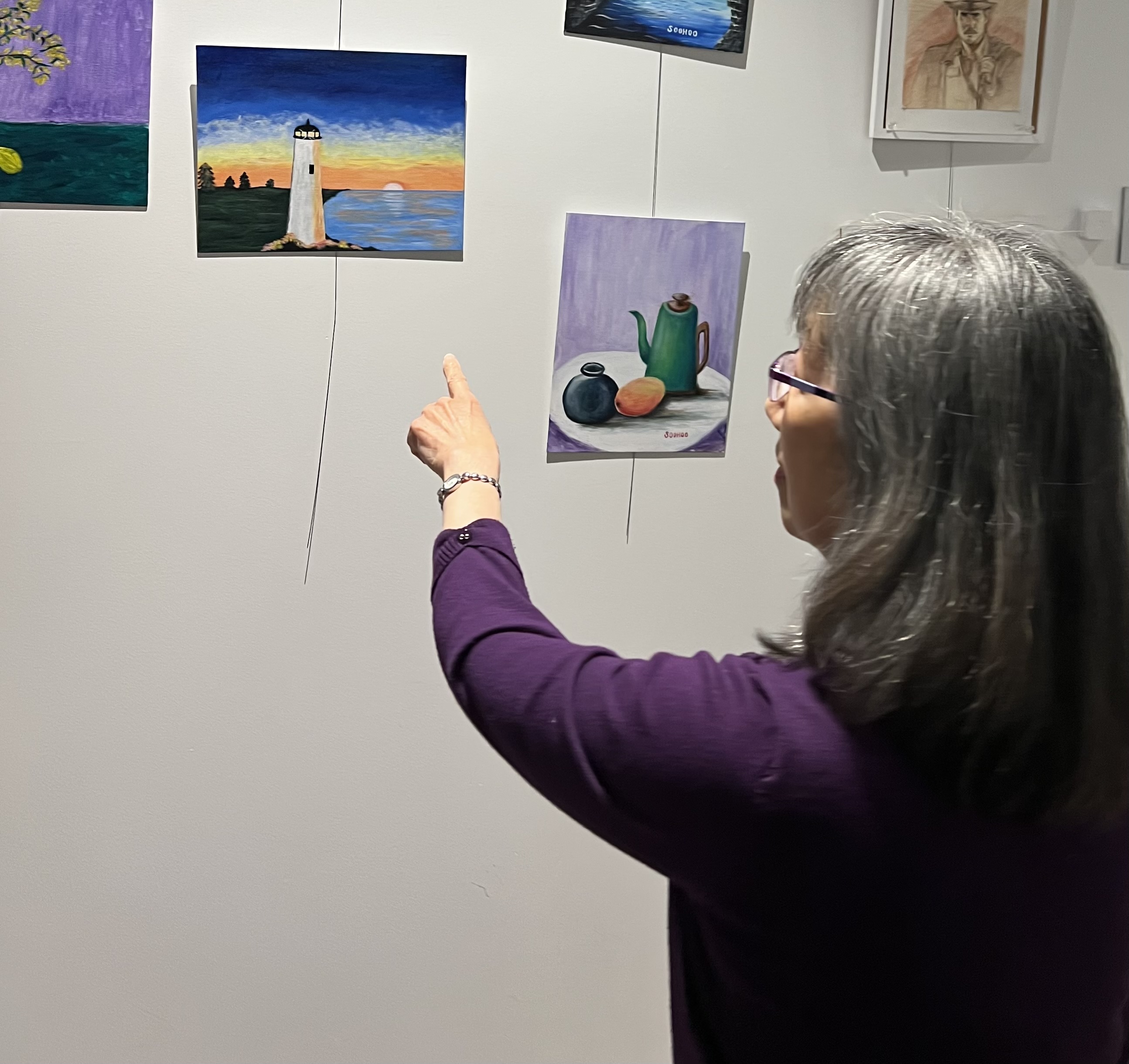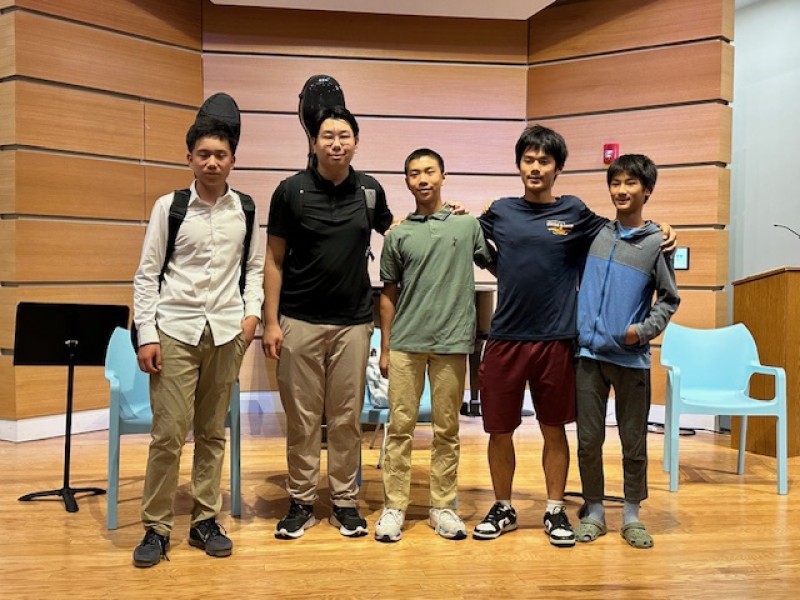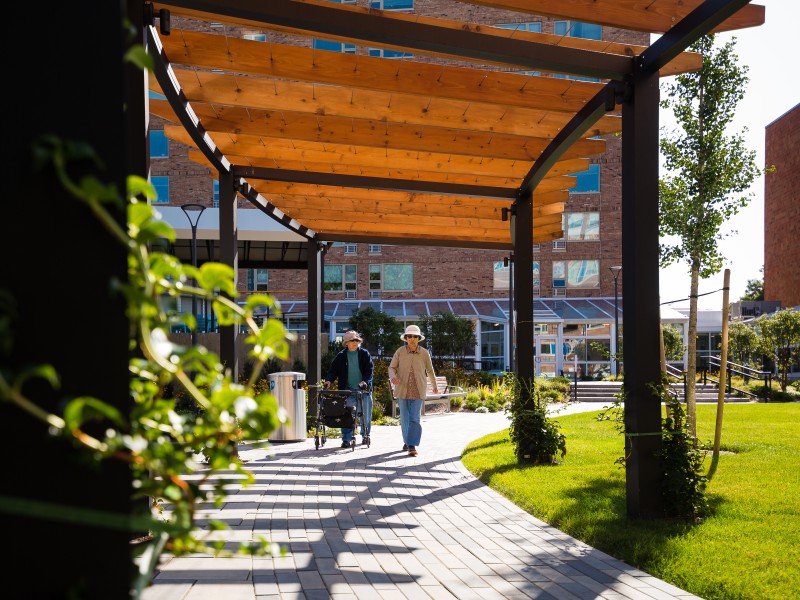Expressive arts programs help older adults build connection and resilience
On a late afternoon in May, 2Life residents gathered at Brown Family House in Brookline to share their works of art with family, friends, fellow residents, and 2Life staff. Guitar music played softly in the background, graciously provided by John Bjorklund, the community’s maintenance supervisor. As sunlight beamed through the multipurpose room’s windows onto the tabletop displays of over 30 creations, older adult residents eagerly discussed both their work and the program that helped produce them, which included classes in abstract art, art history, origami, and collage.
“We study the painter, their technique, and their style,” said Cari, a Brown resident. Others described how relaxing the program and their artmaking is. “It’s not a competition,” said Jeannette. Shelly spoke about the excitement and challenge of learning new techniques, including pointillism.
The art exhibition followed residents’ participation in expressive arts programming over the past year. Similar exhibitions were also held this spring at Shillman House in Framingham and Coleman House in Newton. Madeline Ludtke, a registered art therapist and master's level clinician, serves as the therapeutic arts coordinator at 2Life and led various forms of expressive arts programming at all six 2Life campuses over the past year.
Madeline defines expressive arts as “combining mental health care and the arts to support one's well-being” and says her work with older adults includes a “strengths-based approach, which means that I try to highlight the strengths and skill sets that residents still have.” Expressive arts programs were created at 2Life to foster social connection, promote lifelong learning, and help residents release emotions and adjust to life changes. These programs are uncommon in affordable senior housing but much needed, because, as the population ages, the need for mental health support increases.

More than 160 of 2Life’s older adult residents participated in expressive arts programs across the organization’s six campuses in the past year. Each group has between four and 15 participants, who bring snacks and stories to share with their group and often check on each other in between sessions. Programming takes various forms based on needs, interests, space, and activity schedules. The program at Shillman House, for example, focused on projects that allowed residents to collaborate. Madeline is eager to expand these offerings across 2Life campuses and host more exhibitions for residents to share their creative work.
Expressive arts are woven into many types of resident programs at 2Life, including spiritual care, fitness, and more. For example, Madeline collaborated with Stacy Khalil, director of fitness, and Rabbi Giulia Fleishman, director of spiritual care, on a program focusing on mind, body, and spirit to help new 2Life residents adjust to their new homes and to foster social connection. This pilot program was supported through a partnership with Boston University School of Social Work's Center for Aging and Disability Education and Research (CADER). As another example, Shixuan Ai, a master’s level music therapist, coordinates the 2Life Joyful Connections program, a creative, culturally sensitive therapeutic program to address the needs of residents on the memory loss spectrum. Using the power of music, Shixuan helps reconnect residents with positive memories and emotions — and with each other.
To reach as many residents as possible, 2Life partners with interns from Lesley University, who are completing their Master of Arts (MA) in Expressive Therapies. Throughout the year, interns from Lesley can be found on 2Life campuses representing each of the expressive therapy modalities, including art therapy, music therapy, dance/movement therapy, and drama therapy. According to Madeline, “Lesley's expressive therapies program offers something unique for residents since the students have backgrounds in both mental health counseling and their art form.”
It was clear from the enthusiasm of both artists and viewers at the art shows that during the weeks-long art sessions, both a passion for art and a sense of community had been built, despite some initial trepidation. Some residents had not created art since childhood, Madeline explained, but she encourages them and breaks down their hesitancy by saying, “You can do art. Let me show you one way to do it.”


